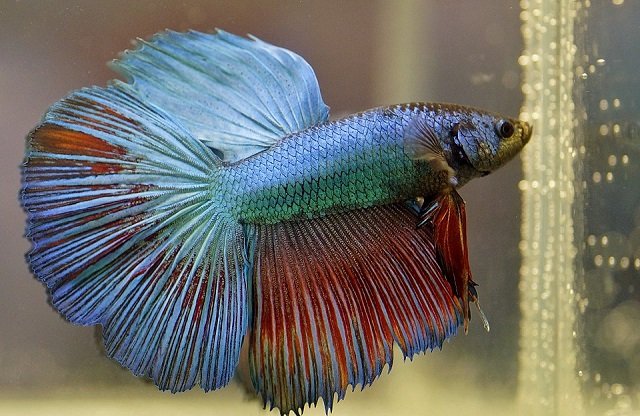
The Role of Periphyton, a complex community of microscopic organisms attached to submerged surfaces, plays a vital role in freshwater ecosystems like ponds.
An article published in the journal Aquaculture International by researchers from the University of South Bohemia in České Budějovice (Czech Republic) and the Nature Conservation Agency of the Czech Republic explores how different artificial substrates can be used to enhance periphyton growth, ultimately benefiting fish health and overall pond productivity.
The Power of Periphyton
Periphyton, a vibrant underwater community teeming with microalgae, bacteria, and tiny invertebrates, plays a vital role in healthy freshwater ecosystems. These diverse assemblages not only improve water quality by removing excess nutrients and pollutants but also fuel the entire food chain by providing a natural feast for fish.
While periphyton thrives in tropical and subtropical regions, its potential in Central European aquaculture has largely remained untapped.
Substrate Comparison: Heather Mats vs. Geotextiles
Traditionally, periphyton naturally grows on submerged surfaces such as rocks and plants. This study investigated the use of heather mats and geotextiles, two types of artificial substrates, to enhance periphyton growth within fish ponds. By providing additional surface area, these substrates create a refuge for periphyton communities to thrive.
This study compared the effectiveness of two common artificial substrates (heather mats and geotextiles) in promoting periphyton growth in temperate zone fish ponds. After 51 days of submersion in the ponds, researchers observed some key differences:
- Geotextiles: Algae and Cyanobacteria Haven
Geotextiles exhibited higher levels of fluorescence, indicating a greater abundance of algae and cyanobacteria, likely due to their smooth surface.
- Heather Mats: A Refuge for Invertebrates
Heather mats, on the other hand, attracted a higher abundance and biomass of periphytic invertebrates, particularly dipteran larvae (fly larvae). The complex structure of heather mats provides these invertebrates with hiding places and facilitates biofilm formation, a crucial food source.
Stay Always Informed
Join our communities to instantly receive the most important news, reports, and analysis from the aquaculture industry.
Choosing the Right Substrate for Your Needs
The ideal substrate choice depends on your specific goals for the fish pond:
- Promoting Algal Growth: If your goal is to maximize algae production for zooplankton, geotextiles may be a better option.
- Enhancing Invertebrate Food Sources: For fish species that rely heavily on insect larvae, heather mats may be more beneficial.
Benefits for Aquaculture
This research opens the door to using periphyton in Central European fish ponds, offering several advantages:
- Enhanced Food Source: By providing a wide range of food options, periphyton substrates improve fish growth and health.
- Reduced Dependence on External Feed: A thriving periphyton community provides a natural food source, potentially reducing reliance on costly and resource-intensive feeds.
- Improved Ecosystem Health: Periphyton plays a crucial role in maintaining water quality, leading to a more balanced and productive pond environment.
Moving Forward: Optimizing Substrate Use
This research highlights the potential of artificial substrates to promote periphyton growth in fish ponds. Future studies could explore:
- The impact of different substrate materials and textures on periphyton composition.
- The optimal placement and density of substrates within the pond.
- The long-term effects of substrate use on overall pond health and ecosystem balance.
Conclusion
By understanding how periphyton responds to different substrates, fish farmers can create a more balanced and productive pond environment, promoting a sustainable and thriving aquaculture operation.
With further research and implementation, periphyton-based aquaculture has the potential to revolutionize fish production, ensuring sustainable and productive ponds in the years to come.
Contact
Šetlíková Irena
Faculty of Agriculture and Technology, University of South Bohemia in České Budějovice
Studentská 1668, 370 05, České Budějovice, Czech Republic
Email: setlikova@jcu.cz
Reference (open access)
Irena, Š., Martin, B., Josef, N. et al. Comparison of periphyton growth on two artificial substrates in temperate zone fishponds. Aquacult Int (2024). https://doi.org/10.1007/s10499-024-01662-6
Editor at the digital magazine AquaHoy. He holds a degree in Aquaculture Biology from the National University of Santa (UNS) and a Master’s degree in Science and Innovation Management from the Polytechnic University of Valencia, with postgraduate diplomas in Business Innovation and Innovation Management. He possesses extensive experience in the aquaculture and fisheries sector, having led the Fisheries Innovation Unit of the National Program for Innovation in Fisheries and Aquaculture (PNIPA). He has served as a senior consultant in technology watch, an innovation project formulator and advisor, and a lecturer at UNS. He is a member of the Peruvian College of Biologists and was recognized by the World Aquaculture Society (WAS) in 2016 for his contribution to aquaculture.




